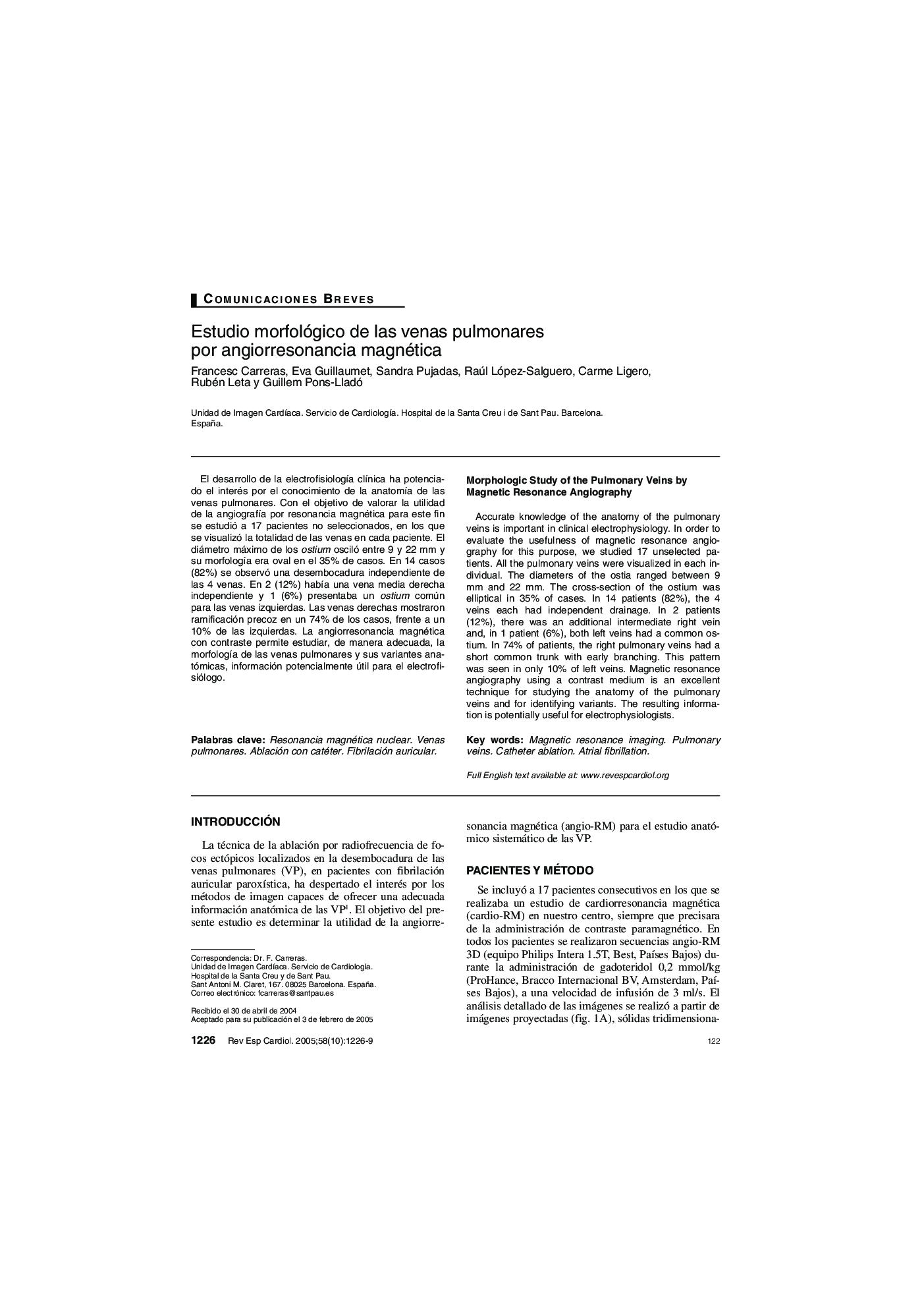| Article ID | Journal | Published Year | Pages | File Type |
|---|---|---|---|---|
| 9181311 | Revista Española de Cardiología | 2005 | 4 Pages |
Abstract
Accurate knowledge of the anatomy of the pulmonary veins is important in clinical electrophysiology. In order to evaluate the usefulness of magnetic resonance angiography for this purpose, we studied 17 unselected patients. All the pulmonary veins were visualized in each individual. The diameters of the ostia ranged between 9 mm and 22 mm. The cross-section of the ostium was elliptical in 35% of cases. In 14 patients (82%), the 4 veins each had independent drainage. In 2 patients (12%), there was an additional intermediate right vein and, in 1 patient (6%), both left veins had a common ostium. In 74% of patients, the right pulmonary veins had a short common trunk with early branching. This pattern was seen in only 10% of left veins. Magnetic resonance angiography using a contrast medium is an excellent technique for studying the anatomy of the pulmonary veins and for identifying variants. The resulting information is potentially useful for electrophysiologists.
Keywords
Related Topics
Health Sciences
Medicine and Dentistry
Cardiology and Cardiovascular Medicine
Authors
Francesc Carreras, Eva Guillaumet, Sandra Pujadas, Raúl López-Salguero, Carme Ligero, Rubén Leta, Guillem Pons-Lladó,
